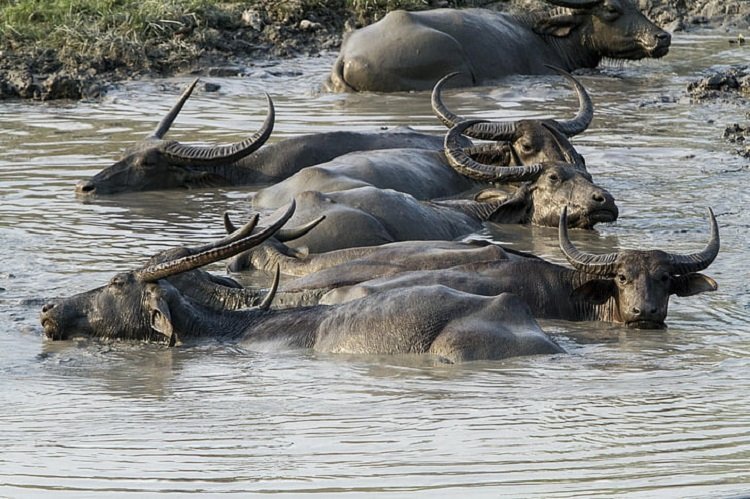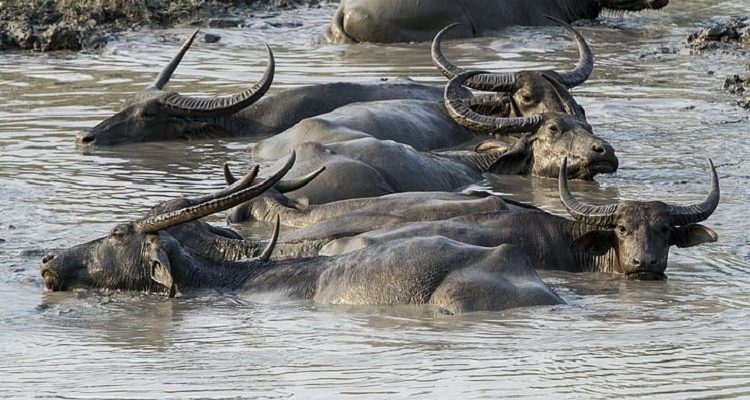
Water buffalos are mostly found in tropical and subtropical regions, where they wade in water and graze on lush vegetation. Think of them as the gentle giants of the wetlands, known for their strong bodies and calm demeanor. In this article, we’ll explore their habitats, distribution, and the challenges they face in the wild. So, grab a cup of coffee and let’s dive into the watery world of water buffalos!
Natural Habitat of Water Buffalos
Water buffalos are primarily native to the wetlands of Southeast Asia, but their habitat extends beyond that. They thrive in areas with abundant water sources like rivers, lakes, swamps, and marshes. These lush environments provide them with everything they need: food, water, and shelter. Their preference for wetlands allows them to wallow in muddy waters, helping to regulate their body temperature and protect their skin from sunburn and parasites.
These creatures are known to spend a good portion of their day submerged in water. Just imagine it: they’re cooling off in a refreshing pond while munching on grass nearby. This unique behavior plays a crucial role in their survival, especially in the hot climates of their native regions. If you picture a beautiful landscape peppered with water bodies, you can almost visualize a large herd of water buffalos peacefully grazing nearby.
Geographic Distribution
Water buffalos are found in a variety of countries, ranging from India and Nepal to Vietnam and the Philippines. They have adapted well to different environments, which has helped them spread across the globe. While they originated in Asia, they have also been introduced to other regions, including some parts of the United States and Australia.
In India, the riverine variety of water buffalos is commonly seen along riverbanks and in the wetlands of the Himalayan foothills. Meanwhile, the swamp variety is mostly found in regions like Southeast Asia, where they thrive in marshy conditions. Their adaptability to different habitats showcases their resilience, making them a noteworthy species in agriculture and wildlife.
Domestic vs. Wild Water Buffalos
You might be surprised to learn that there are two main types of water buffalos: domestic and wild. Domestic water buffalos are typically found in farms and ranches, where they provide milk, meat, and labor for agricultural tasks. They are generally kept in areas that allow for easy access to water and grazing grounds, ensuring they stay healthy and productive.
On the other hand, wild water buffalos live in semi-wild conditions, often in protected reserves and national parks. These animals are a bit shier and more elusive than their domestic cousins, usually found in the more remote wetlands far from human interference. Their habitats are crucial to maintaining biodiversity, as they contribute to the overall health of the ecosystems they inhabit.
Characteristics of Their Habitat
So, what makes a perfect habitat for water buffalos? Here are some key characteristics that their living spaces generally share:
- Abundant water: Water buffalos love to wallow, so wetlands with lakes and rivers are ideal.
- Lush vegetation: They thrive on a diet of grasses and reeds, which flourish in these areas.
- Soft, muddy ground: This softer terrain helps them move around easily and provides a comfortable spot for lounging.
- Protection from predators: Dense vegetation helps shield them from threats in the wild.
These factors together create a suitable environment for water buffalos to flourish, meet their basic needs, and contribute positively to their ecosystems.
Challenges Facing Water Buffalos
Despite their resilience, water buffalos face several challenges in their habitats today. One major issue is habitat loss due to human activities like agriculture, urbanization, and deforestation. As wetlands are drained or converted for farming, these creatures lose their homes and access to vital resources.
Pollution is another concern, as contaminated water can affect their health and the surrounding ecosystem. Climate change also poses risks, with changing weather patterns impacting the availability and health of their habitats. These challenges make it critical for conservation efforts to focus on preserving and restoring wetland areas where water buffalos can thrive.
Conservation Efforts
Conservation initiatives are underway to help protect the habitats of water buffalos and ensure their survival. Organizations work to raise awareness about the importance of wetlands and the species that call them home. By promoting sustainable agricultural practices and protecting natural areas, we can help these magnificent creatures continue to thrive.
Additionally, some parks and reserves focus on creating safe environments for wild water buffalos, ensuring their populations remain stable in the face of environmental challenges. With ongoing efforts to protect these habitats, we can hope for a brighter future for water buffalos and the ecosystems they inhabit.
Understanding where water buffalos live and the characteristics of their habitats is crucial for their survival and the health of our ecosystems. These gentle giants deserve our respect and protection as they play an important role in maintaining the balance of nature.
By learning about their needs, recognizing the challenges they face, and supporting conservation efforts, we can contribute to the preservation of these amazing animals. As we enjoy our own lives, let’s remember to care for the habitats of the creatures that share our planet, ensuring that future generations can also appreciate the beauty of water buffalos in their natural environments.

